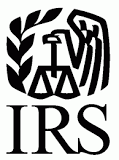The Setting Every Community Up for Retirement Enhancement Act (known as the “SECURE Act”) was signed into law on Dec. 20, 2019, and went into effect on Jan. 1, 2020. The law includes a lot of tweaks to retirement law, including many that directly impact qualified retirement plans, as well as others that indirectly impact qualified plan participants. This post addresses the most significant such provisions.
Primary Changes Directly Impacting Qualified Retirement Plans
Long-Term, Part-Time Employees Can Make Deferrals
The SECURE Act requires that plans permit employees who are at least age 21, have worked for at least three consecutive 12-month periods, and have completed at least 500 hours of service in those three years to make salary deferrals to the plan. As long as these individuals stay below 1,000 hours, they may be excluded from employer contributions (including top-heavy and gateway contributions), ADP testing, coverage testing, and other nondiscrimination testing. Because the law permits plans to ignore years of service prior to 1/1/2021 for the three-year period purposes, no employees will need to be permitted to defer under this provision before 2024.
Participant Statements Must Include Annuitization Information
The SECURE Act requires employers offering 401(k) and other qualified defined contribution plans to show employees not just the total balance in their account but also a projected monthly income in retirement based on that balance. The Department of Labor is expected to issue guidance for how plan sponsors should calculate projected monthly income, taking into account factors such as long-term contribution rates, investment performance and overall market growth. The DOL’s guidance will be complicated by the fact many plans have been doing this for years already. Hopefully, the DOL will not make such disclosures less useful. These disclosures aren’t required until 12 months after the DOL does everything it is required to do: i.e., issue guidance, issue model disclosure, and outline the required assumptions.
Required Minimum Distribution (RMD) Rules
The SECURE Act requires changes to the RMD rules to extend the required beginning date for living participants from the April 1 following the year in which the participant attains 70½ to such date following attainment of age 72. This change is generally effective for employees who reach age 70½ after 12/31/2019.
Form 5500 Late Filing Penalties Increasing ten-Fold
IRS penalties for late filed Forms 5500 will be increasing from $25 per day to $250 per day, and the maximum penalty per form (per plan year) increases from $15,000 to $150,000. This makes DOL’s Delinquent Filers Voluntary Correction Program (DFVC) (and, the IRS procedure for Forms 5500-EZ under Rev. Proc. 2015-32) far more valuable for late filers. The Form 8955-SSA penalties are also increasing ten-fold: from $1 per day per unreported participant to $10; and from a $5,000 maximum to $50,000. Finally, the obscure requirement that plan administrators file Form 8822-B to register a change in plan name or plan administrator name/address is also seeing enhanced penalties. The penalty for not filing that form will increase from $1 per day to $10, up to a maximum of $10,000 (up from $1,000). All of these changes are effective for returns due after 12/31/2019.
Distribution Related to Birth or Adoption
The SECURE Act permits Plans to allow participants who have or adopt a child after 2019 to take a distribution of up to $5,000 from the plan without having to pay the 10% premature distribution tax, if the distribution is made within one year of the birth or adoption. Further, the distributed funds may be repaid and treated like a rollover to a plan or IRA. There appears to be no deadline on repayment.
Extended Adoption Deadline for New Plans
The SECURE Act permits the adoption of new plans up to the tax return due date of the employer, including extensions. This rule is effective for plan years beginning after 12/31/2019. However, this applies only to employer contributions. Deferral provisions must be in place before the plan accepts elective deferrals. This will be a boon to the establishment of new plans, particularly for small employers whose owners may be looking for a way to reduce their tax burden in the immediately prior year.
Simplifying Safe Harbor 401(k) Plan Administration
The SECURE Act includes several provisions that will reduce the administrative burden for safe harbor 401(k) plans, including:
- No safe harbor notice is required for a safe harbor plan that has only nonelective contributions. However, a nonelective contribution safe harbor plan that has matching contributions intended to fall within the ACP safe harbor must still give a safe harbor notice.
- A safe harbor nonelective plan design (both regular and QACAs) may be adopted up to 30 days before the end of the plan year. This late adoption is not available for plans that have an ADP or QACA matching contribution at any time during the plan year.
- A safe harbor nonelective plan design may also be adopted after the 30-day deadline and as late as the deadline for ADP refunds (generally the end of the plan year following the year for which the refunds are made), if the nonelective safe harbor contribution is increased from the normal 3% of compensation to 4%.
QACA Auto Escalation
The SECURE permits an increase in auto escalation in a QACA. The Act raises the 10% cap on the automatic escalation feature of QACAs after the first-year period, and replaces it with a 15% cap. This recognizes that 10% may not be a high enough rate of deferral for many participants. This is an optional provision (i.e. Plan Sponsors are not required to auto escalate to 15%, but may do so).
Pooled Employer Plans (Open MEPs) Encouraged
The SECURE Act gives a big boost to Open MEPs (now to be called “Pooled Employer Plans” or “PEPs”), effective for plan years beginning in 2021. The Act permits a “pooled plan provider” or “PPP” to sponsor a multiple employer plan for its clients.
The PPP is required to take responsibility as a named fiduciary, plan administrator, and the person who ensures that ERISA and Code requirements are met for the plan. The PPP is also required to make sure that all plan fiduciaries are properly bonded (and the new law makes it clear that bonding applies regardless of whether the fiduciary handles plan assets).
The SECURE Act provides that the PEP will not be disqualified because of a failure of an adopting employer to comply with the legal requirements. The adopting employer at issue, however, will be liable for qualification issues that affect its employees. The IRS will likely finalize its proposed rules, which permit the plan sponsor (the PPP under the Act) to eject the noncompliant part of the plan.
The law also reinforces that the adopting employer acts as a fiduciary in deciding to join a given PEP and for monitoring the PPP and other plan fiduciaries. In addition, unless the PEP has delegated investment management to someone else, the adopting employer is the investment fiduciary for its portion of the PEP. The law further provides that the PEP cannot apply “unreasonable” restrictions, fees, or penalties to employers or employees for ceasing participation, taking distributions, or otherwise transferring assets.
The SECURE Act leaves it to the Departments of the Treasury and Labor to issue regulations to flesh out the details of the new structure, and permits a good faith, reasonable interpretation of these rules until such guidance is issued.
Expect the big players in the retirement industry to roll out PEPs in the years to come. These arrangements will likely be attractive for start-up and small plans.
Other Changes Indirectly Affecting Qualified Plan Participants
Elimination of ‘Stretch’ IRAs, with some exceptions
“Stretch IRAs” have for years been a way of reducing the tax bill non-spouse beneficiaries pay when they inherit IRAs. These beneficiaries could “stretch out” their required minimum distributions (RMDs) over their lifetimes. This provided a lot of flexibility to plan the distributions in the most tax advantageous way. The SECURE Act eliminated “stretch” IRAs for those not deemed “eligible designated beneficiaries.” Anyone who is not an “eligible designated beneficiary” now must take full distribution of an inherited IRA within 10 years after the date of death.
Eligible designated beneficiaries, who can still stretch their RMDs, include:
- Surviving spouses
- Minor children, up to majority – but not grandchildren
- Disabled people- under IRS rules
- Chronically ill people
- Individuals not more than 10 years younger than the IRA owner
Extension of IRA Eligibility
People over age 70½ can make deductible IRA contributions starting in 2020.
Effective Date and Deadline to Make Required Amendments
The SECURE Act was generally effective January 1, 2020. However, qualified plans will not be required to make amendments to comply with the SECURE Act until the last day of the plan year beginning on or after January 1, 2022. The law also permits the IRS to extend the amendment date further if required.

 The U.S. Department of Labor’s Employee Benefits Security Administration, the IRS, and the Pension Benefit Guaranty Corporation (PBGC) have releasedadvance informational copies of the
The U.S. Department of Labor’s Employee Benefits Security Administration, the IRS, and the Pension Benefit Guaranty Corporation (PBGC) have releasedadvance informational copies of the